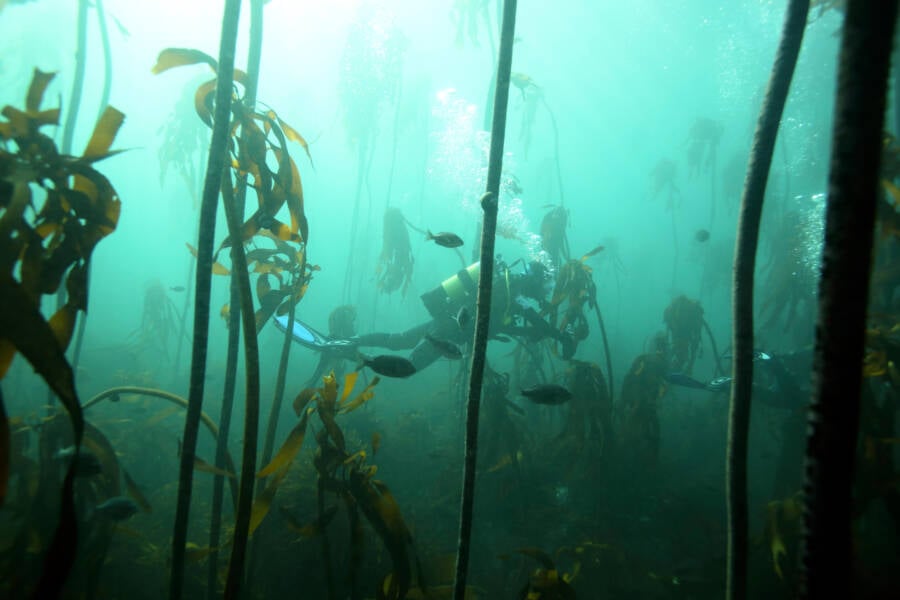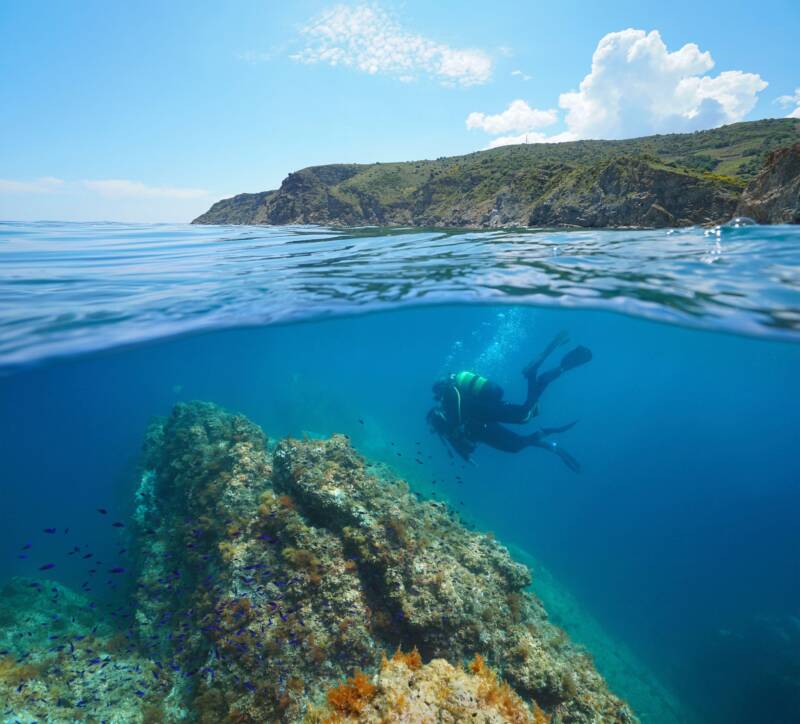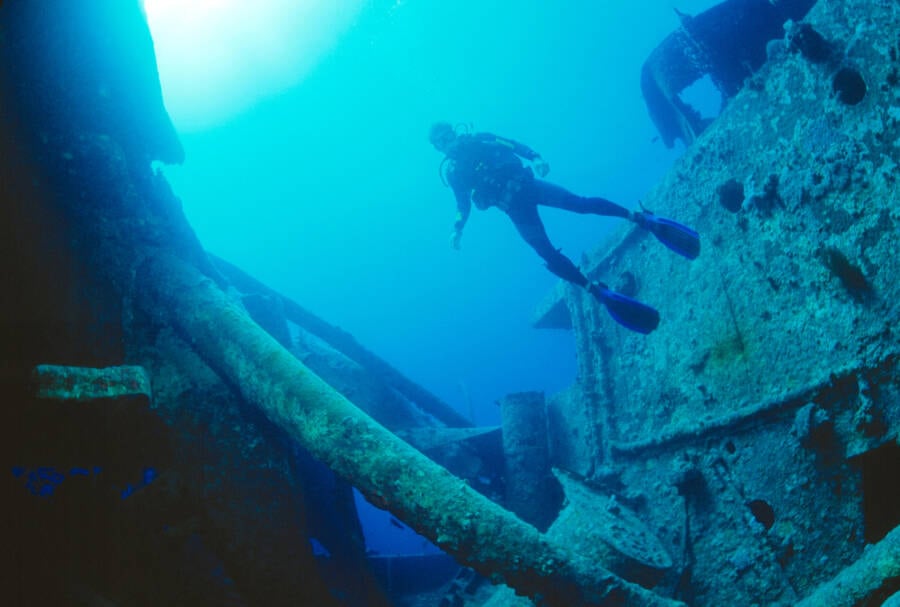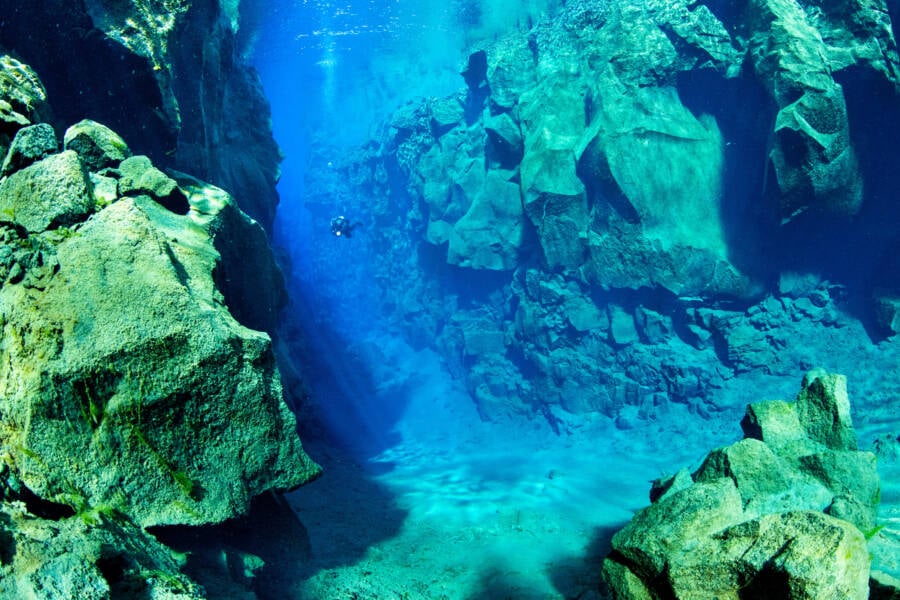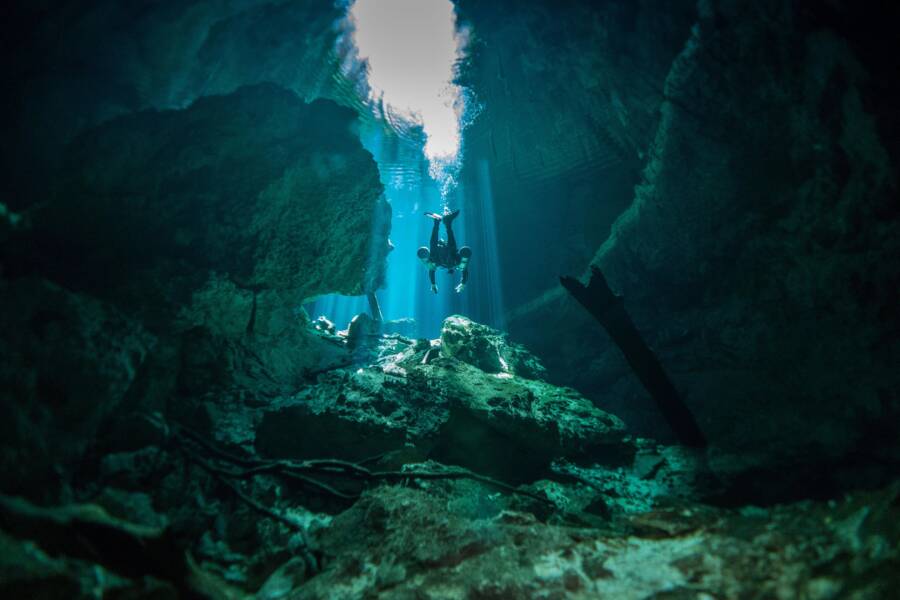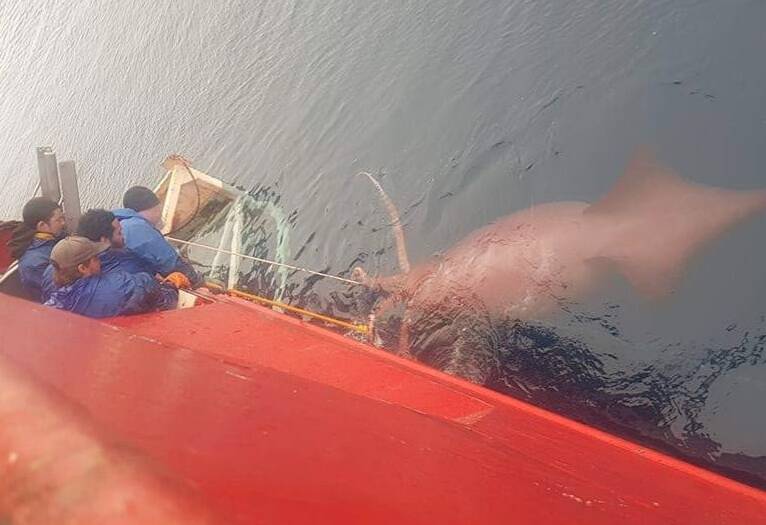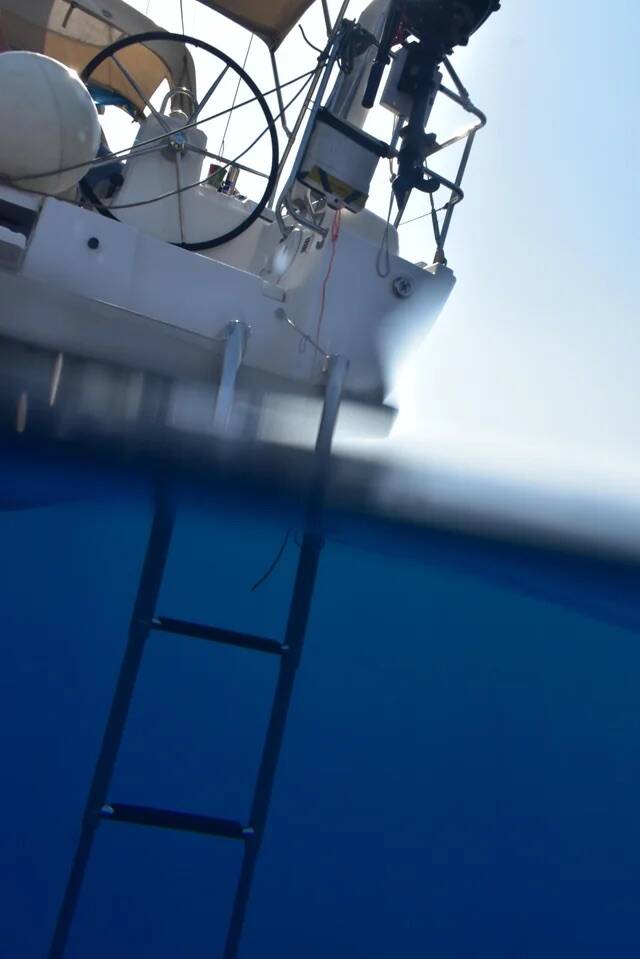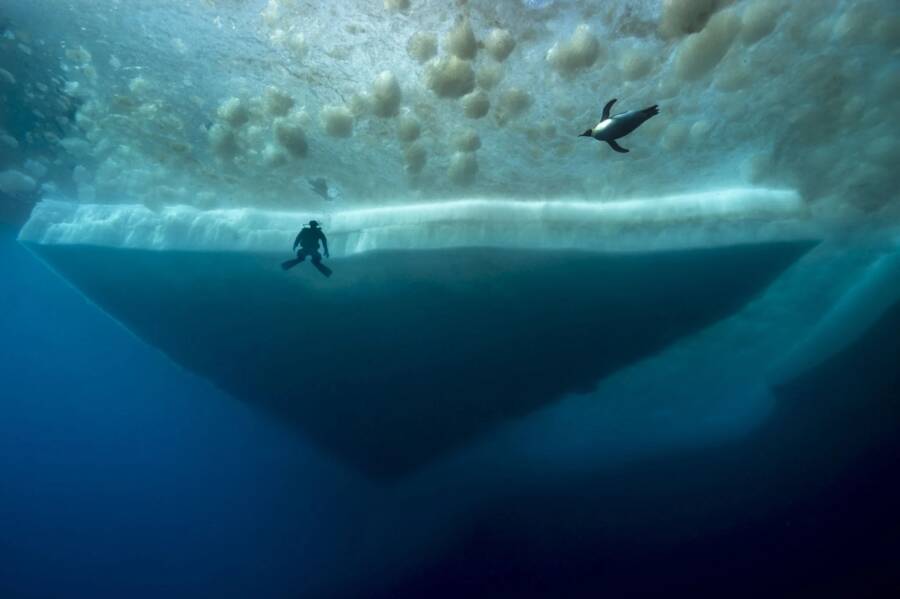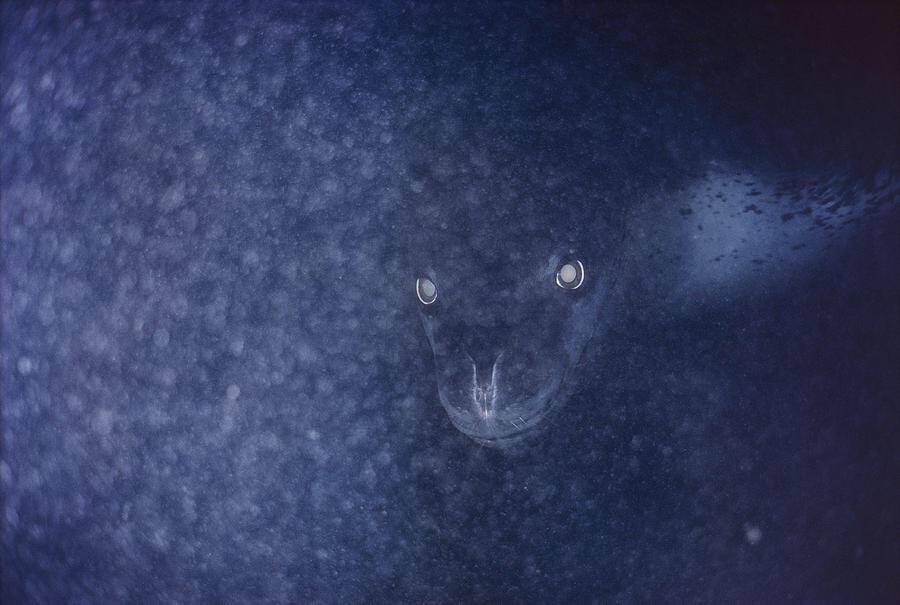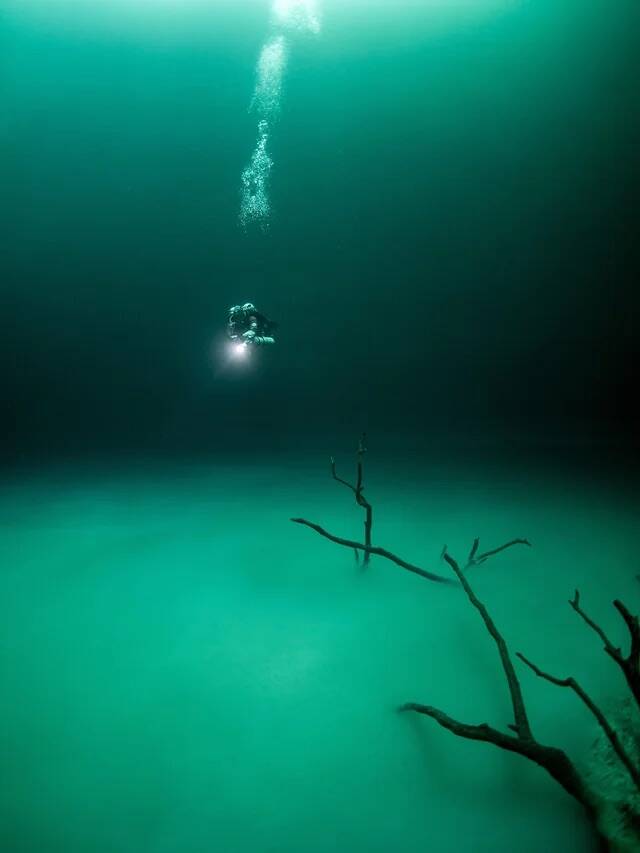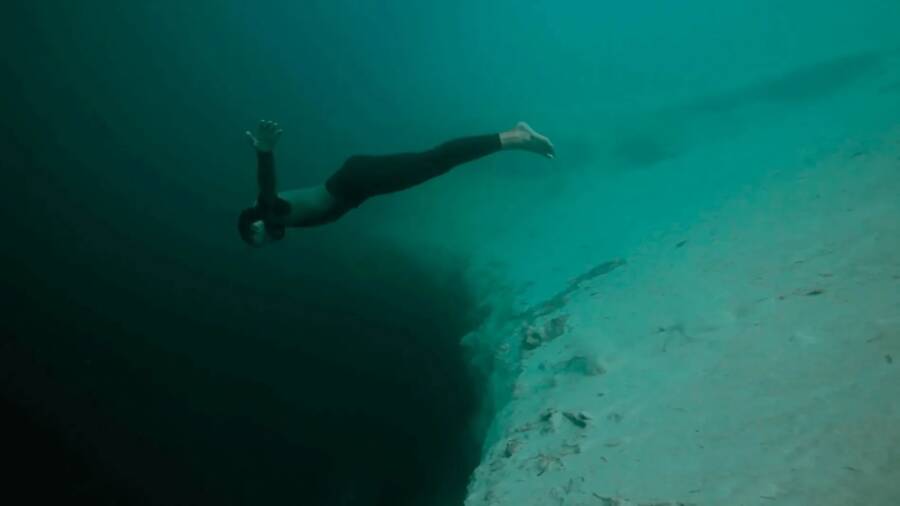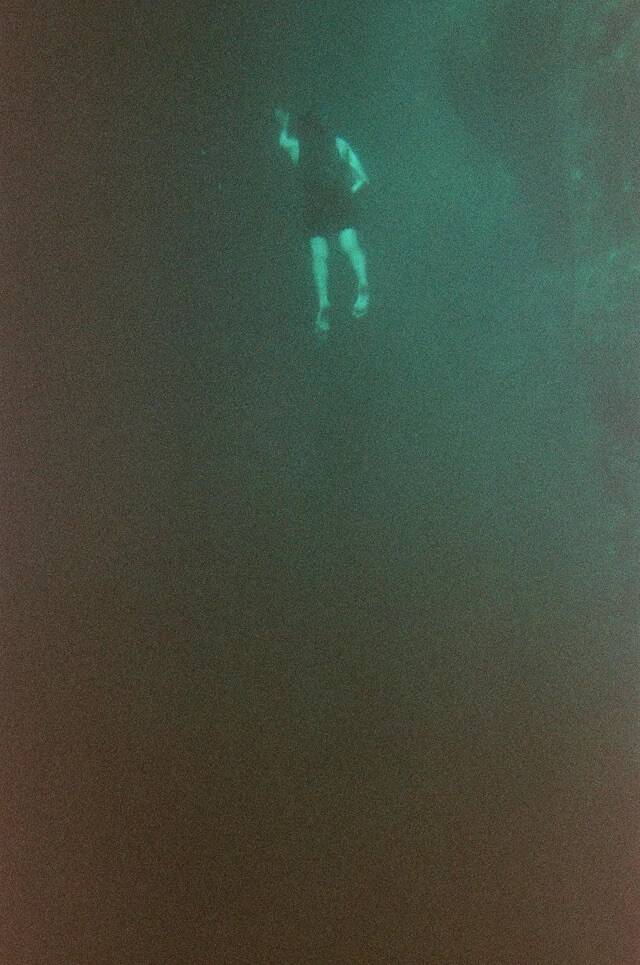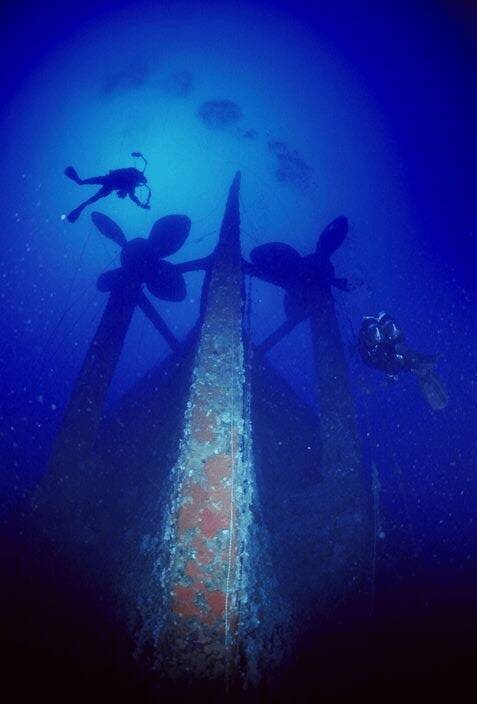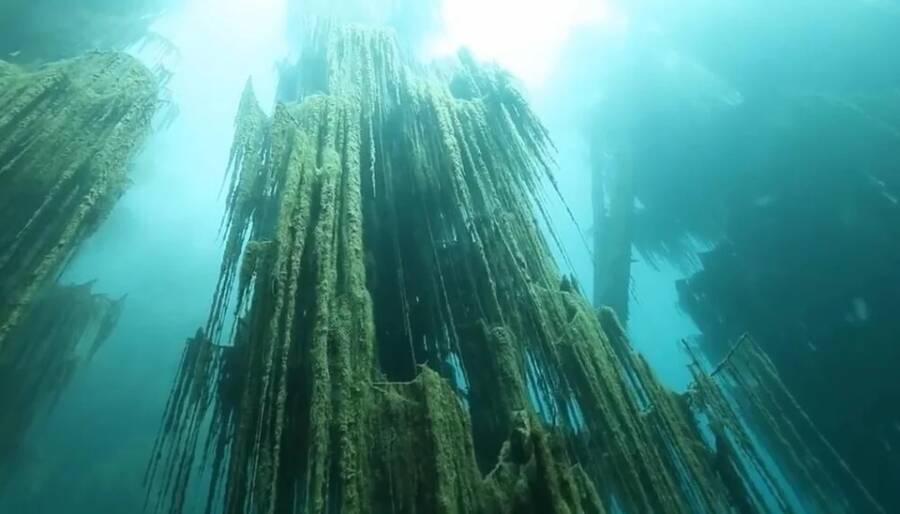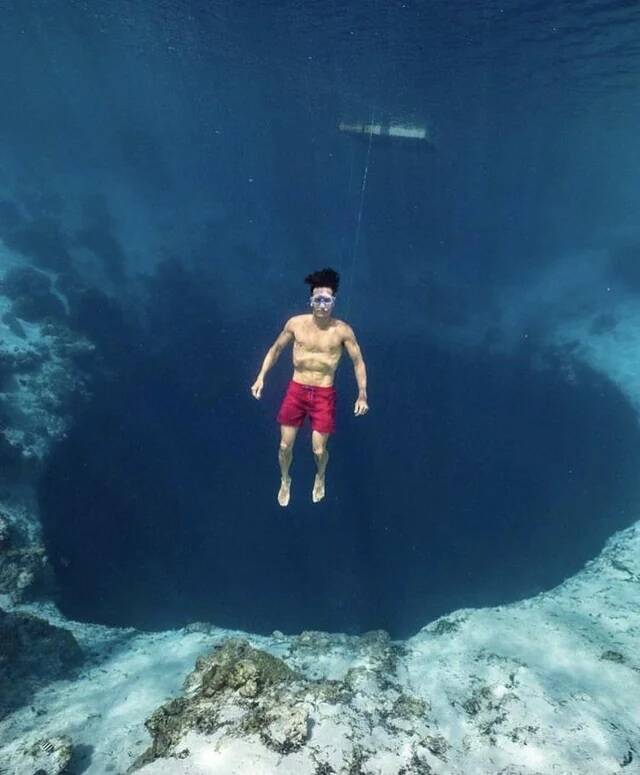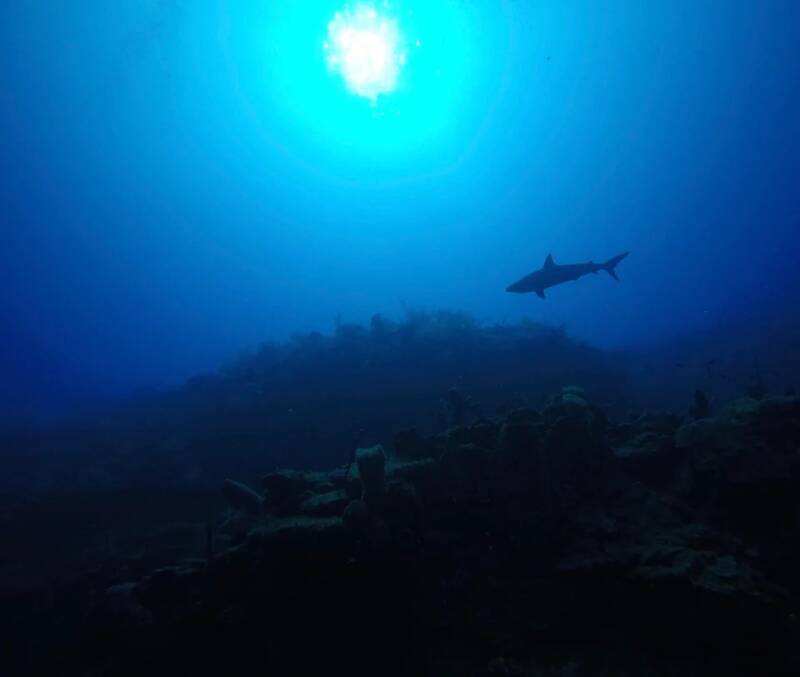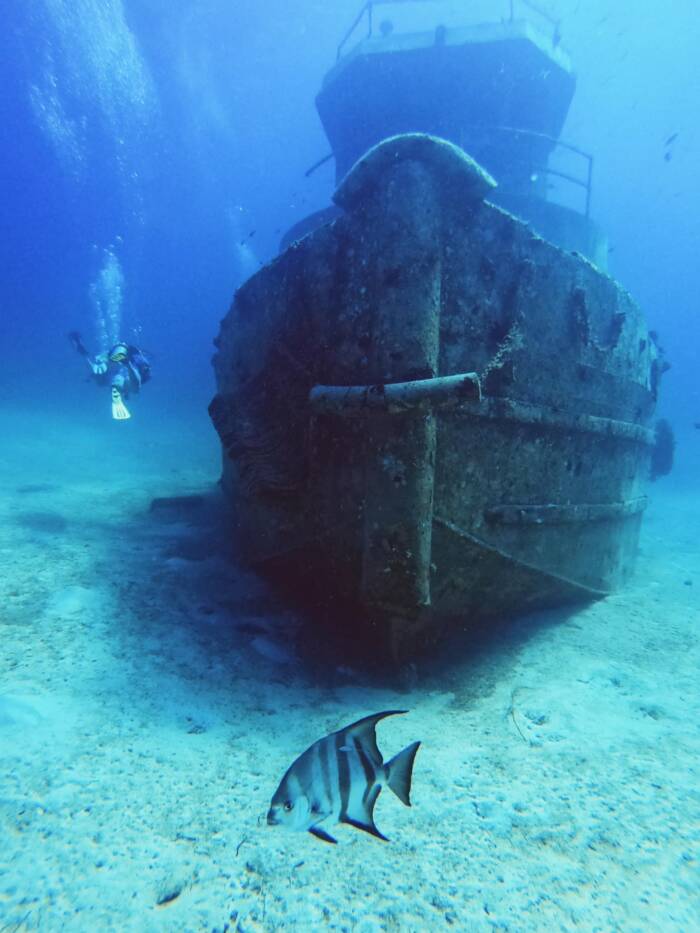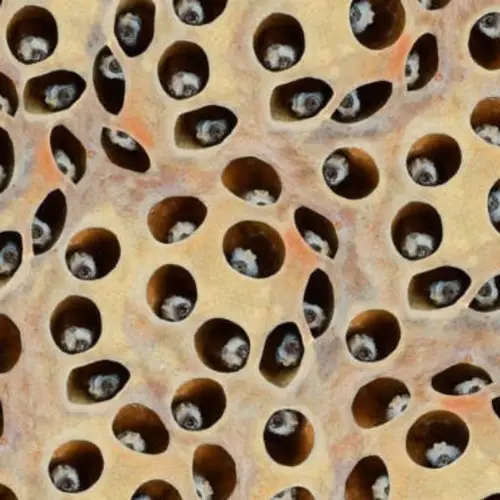Thalassophobia is a primal fear that likely stems from humans' innate anxiety about the unknown — and myths about everything from Atlantis to the Loch Ness monster testify to how long people have suffered from it.

Wikimedia CommonsThalassophobia is an intense fear of the sea, and those who suffer from it may feel panic or anxiety simply from looking at a photo in which they can’t see land.
Humans have always been afraid of the unknown: the dark, the infinite universe, things that lurk beneath the surface of deep water. This latter fear, known as thalassophobia, is incredibly common — so common, in fact, that there is an entire subreddit dedicated to it with 1.5 million members.
Thalassophobia is an intense and persistent fear of deep bodies of water like oceans, seas, and lakes. This may include a fear of being far from land or of the creatures that swim unseen beneath the waves. It’s unknown exactly how many people suffer from thalassophobia, but estimates range from two to nine percent of the population.
Of course, like any phobia, thalassophobia goes beyond what would be considered a “healthy” level of anxiety. For instance, most people would likely be afraid if they were stranded alone in the middle of the sea. For thalassophobes, however, that fear is crippling and extends to essentially any situation involving deep water.
So why are some people so afraid of the ocean? Thalassophobia may actually be evolutionary. Our earliest ancestors recognized that they’d developed to walk on land and that the sea was antithetical to that purpose. This primal fear was then passed down through countless generations — leading to thalassophobia as we know it today.
What Is Thalassophobia?
Thalassophobia, as the name suggests, is a specific type of phobia — an extreme or irrational fear or aversion. The term stems from the Greek phobos, meaning “fear,” and thalassa, meaning “sea.”
Generally, people who suffer from thalassophobia become incredibly anxious around deep bodies of water. They may even avoid them outright. In either case, the fear they feel in these instances is disproportionate to the actual level of danger the situation presents.
Like many other phobias, the Diagnostic and Statistical Manual of Mental Disorders, Fifth Edition (DSM-5) does not recognize it as a distinct disorder. Rather, it is considered one of many “specific phobias,” alongside fears like nyctophobia (fear of the dark), ophidiophobia (fear of snakes), and trypophobia (fear of holes).
It's also important to note that thalassophobia is distinct from a general fear of water, which is known as aquaphobia. Those with aquaphobia struggle with more common things like taking showers and baths or even drinking water.
One thalassophobe on Reddit wrote of the moment they first experienced the crippling fear of open water:
"I decided to wade out as far as I could. The August water was warm and was about shoulder high when I became parallel with the jetty on my right. Then I looked down. The shelf the beach was on ended right where I was standing. I was looking down into total darkness."
This experience encapsulates what is perhaps the most chilling aspect of thalassophobia: the inability to put a finger on what exactly is so terrifying about the sea.
Legends Surrounding The Fear Of The Sea
This mystery of what lies beneath the water's surface has sparked countless myths and legends throughout history. For instance, there's the Loch Ness Monster, the aquatic cryptid that supposedly lives beneath the murky waters of a Scottish lake.
A couple driving near Loch Ness in 1933 claimed to have seen a large creature "rolling and plunging" through the water. Word quickly spread, and soon, people from near and far were flocking to the lake to see the monster for themselves. Of course, the existence of "Nessie" has never been proven, but her enduring story is a testament to just how deeply the fear of what lurks in the unseen depths of lakes and oceans is engrained in society.

Wikimedia CommonsThis 1934 photo of Nessie is now known to be a hoax, but it had many people convinced that a monster truly lurked in the depths of Loch Ness.
Then there's the Qalupalik, the Inuit sea monster. According to Indigenous folklore, the Qalupalik lures children into the frigid waters of Alaska, Canada, and Greenland by singing or tapping on the ice.
Meanwhile, outside of the realm of myth, real-life sea creatures have struck fear into the hearts of people around the world for centuries, right up to the present day. Whether it's bizarre deep-sea animals that still stalk the ocean floor or long-extinct prehistoric predators like the megalodon, ocean creatures are, for many, synonymous with terror.
Examples of humanity's fear of the ocean can even be found in the ancient works of Greece, Rome, the Scandinavian regions, and the Hebrew Bible, with stories of creatures like the Kraken, the Leviathan, and the Charybdis.
The tale of Noah's Ark and the biblical flood from the Book of Genesis also speaks to our ancestors' knowledge of how dangerous water could be. So does the legend of the sinking of Atlantis, which was written by Plato around 360 B.C.E.
But where exactly did these historic fears stem from?
What Causes The Fear Of Open Water?
Research specifically on thalassophobia is scarce, but it shares many similarities with other specific phobias that can offer clues as to how it forms.
Any combination of genetics, brain circuitry, family dynamics, or traumatic experiences may cause this fear of deep water. For example, phobias can often be triggered by a negative experience, whether in childhood or later in life. In the case of thalassophobia, someone may have had a near-drowning experience or perhaps witnessed someone else drown or fall off a boat. It may even be the result of an imagination running wild.
Jackie Mantey, a reporter for Columbus Monthly, recalled first feeling the anxiety that comes along with thalassophobia as a child. "As a kid... I used to imagine that the painted lines at the bottom of swimming pools were sharks," Mantey said.
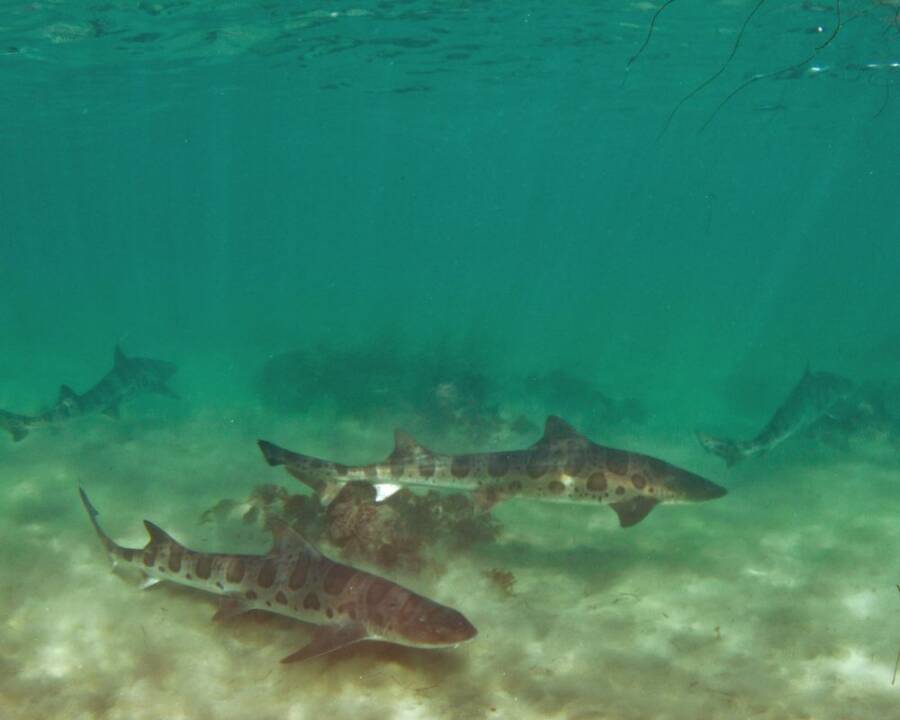
Public DomainThe thought of sharks or other ocean creatures moving unseen beneath the feet of swimmers terrifies many thalassophobes.
Parental figures or other role models can also perpetuate these extreme fears. For example, a child whose mother or father fears the ocean might also be more inclined to be frightened of open water.
Likewise, certain phobias could even be inherited genetically or triggered due to dysfunctional brain circuitry, resulting in the "fight, flight, or freeze" mechanism triggering at non-threatening times — such as when looking out at a body of deep water while safe on land.
Ultimately, there is no single cause for thalassophobia. Like many other phobias, its main characteristic is that it is inherently an "extreme" or "inappropriate" response to a relatively non-threatening situation, and that could be the result of numerous triggers.
Symptoms Of Thalassophobia And Ways To Treat The Fear Of The Sea
Again, thalassophobia shares much in common with many other phobias, including its symptoms. Of course, the severity will vary from person to person. Generally, symptoms of thalassophobia and many other phobias can be broken down into the physical and the psychological.
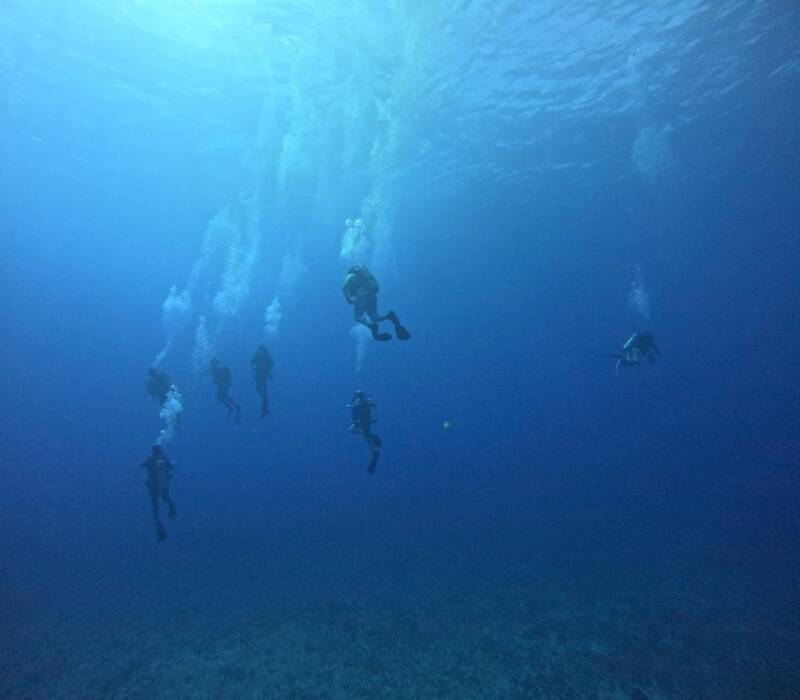
RedditIt's unknown exactly how many people have thalassophobia, but the number may be as high as nine percent of the population.
According to Forbes Health, psychological symptoms of thalassophobia can include:
- feelings of dread
- anxiety
- panic
- racing thoughts
- avoidance
- insomnia
These are traits inherent to all phobias, as these feelings of extreme fear often go hand-in-hand with panic attacks and anxiety.
Physically, these feelings can manifest in a variety of ways, including:
- rapid breathing
- rapid heart rate
- sweating
- dizziness
- chest pain
- nausea
- headache
- dry mouth
- trembling
In general, experts recommend a variety of treatment options for thalassophobia. These most commonly include cognitive-behavioral therapy (CBT), medication, and practicing relaxation techniques.
CBT is a form of psychological treatment used for a wide range of problems, including depression, anxiety disorders, substance abuse, and severe mental illnesses. The ultimate goal of CBT is to change a patient's harmful or disruptive thought patterns and work to create coping mechanisms that help them lead a better life.
The core principles of CBT generally revolve around how distortions in a person's thinking can lead them down paths of unhelpful thoughts and actions. To exemplify, someone suffering from depression may have negative beliefs based on their self-perception. They don't consider how others might regard them and sometimes ignore key facts about themselves.
In the case of thalassophobia, there may be a series of thinking patterns that trigger a negative response. A picture of the ocean, for example, cannot physically harm you — yet a thalassophobe might have an intense, fear-based response simply from seeing such a photo.
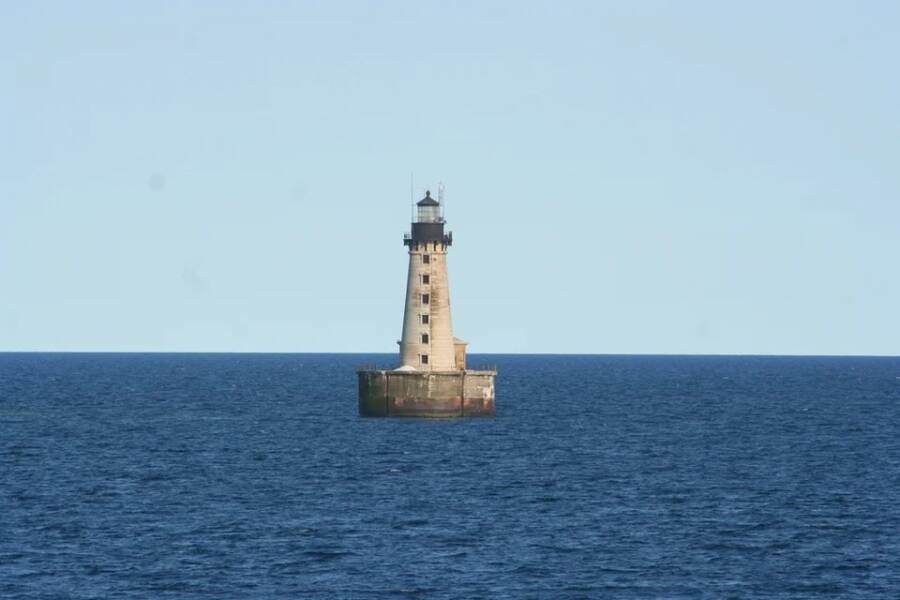
RedditThe Stannard Rock Lighthouse, from which no land can be seen at night.
What are the thought processes that cause this anxious fear? How can a patient work to change these thought processes and the distortions that led to them? These are just some of the questions CBT seeks to answer. Of course, this is by no means a full explanation of how CBT works, and the process is different for every person who undergoes it.
Sometimes, CBT is accompanied by certain anti-anxiety medications, including benzodiazepines like Valium or Xanax or beta-blockers like propranolol. These medications can be effective in reducing a thalassophobe's anxiety in what would otherwise be an anxiety-inducing situation, such as boarding a boat.
Medical professionals may also work with their patients to develop relaxation techniques such as deep breathing, meditation, and mindfulness to help reduce symptoms of anxiety that come along with thalassophobia. It is not uncommon for all three of these treatment options to be used in conjunction.
How The Fear Of The Sea Has Influenced Pop Culture
Today, the fear of open water is a common focus in movies, television shows, short stories, and novels. Take the works of H. P. Lovecraft, for example, which speak of the Great Old One, Cthulhu, who is said to lie sleeping at the bottom of the ocean — for now.
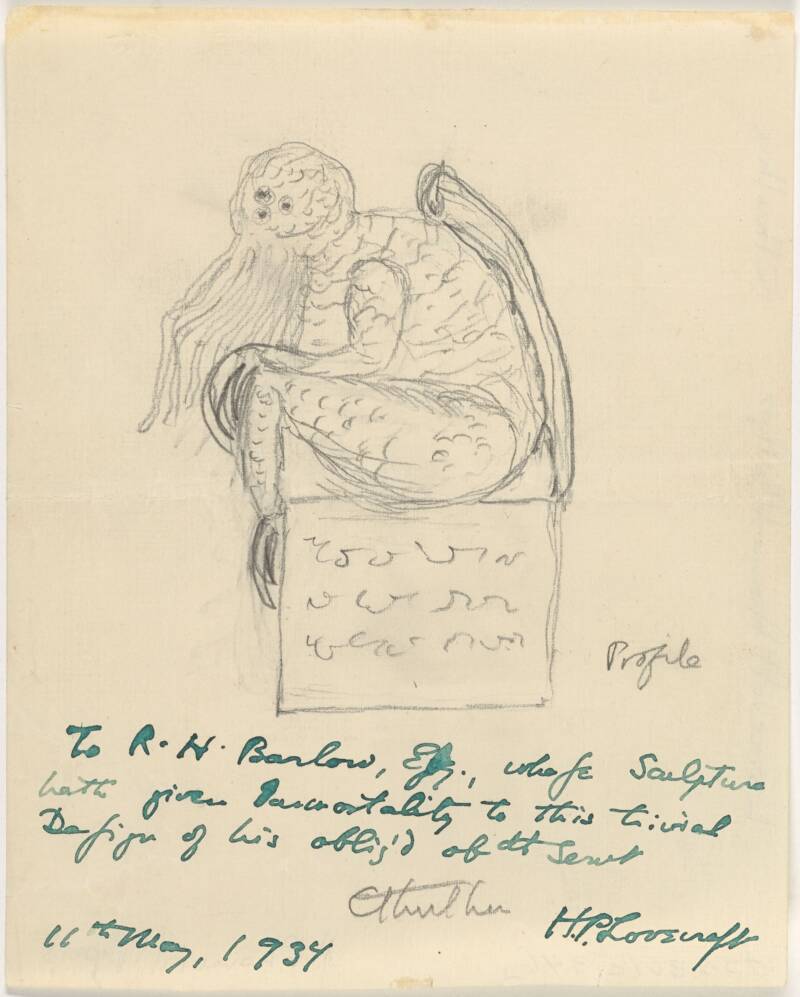
Public DomainA sketch of Cthulhu by H. P. Lovecraft.
Or look at more modern examples, with films like Jaws, The Meg, and the aptly-titled 2020 horror film Underwater.
It should be noted, as well, that there is some distinction between thalassophobia and a related condition, megalohydrothalassophobia, which refers to the fear of massive underwater creatures.
Still, whether humans find themselves afraid of the ocean itself or the creatures that lurk below its depths, there has been no lack of this fear throughout history.
The ocean has always been a mysterious place, and even our scientific understanding of its many enigmas has yet to illuminate the whole picture. At the end of the day, modern humans are no less vulnerable to drowning or becoming lost at sea than our ancient ancestors.
Recent expeditions, like that of the lost Titanic submarine, serve as unfortunate examples of this.
Thalassophobia may be the most extreme version of this fear, but that's not to say it is entirely unjustified. Still, it can be a crippling condition for many people who suffer from it, often negatively affecting their daily lives.
If you experience symptoms of thalassophobia, it is important to speak with a licensed medical professional to get a full understanding of your treatment options.
After learning about thalassophobia, read about Point Nemo, the remote location in the middle of the ocean. Or, see our list of 25 of the weirdest phobias out there.
